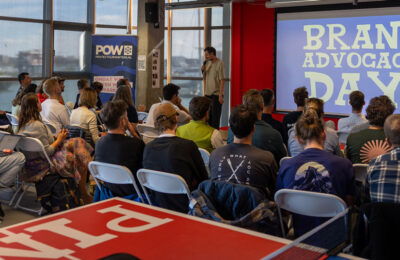With fibers made from recycled PET bottles going mainstream, how can brands stand out against the competition? Morphlon demonstrates that the textile industry’s sought-after “most sustainable” fiber is the one that’s sitting right under its nose.
Sustainable textiles continue their forward march, and whereas recycled garments were a rarity just a few years ago, several major players are now setting their sights on 100% recycled fibers by 2025.
“To meet these goals, many are turning to recycled fibers made from PET bottles,” shares Jeff Wen, Chairman of Long John Group, who continues, “This is great! But the industry shouldn’t forget looking much closer to home and recycle its own textile waste streams.”
Because as it turns out, the sustainability credentials for fibers made of post-industrial recycled textile far surpass fibers made from recycled PET bottles alone.
Mountains of waste, repurposed
Globally, nearly 100 million tonnes of textile waste are created each year. Less than 10% of this is recycled or reused, and much is left to fill warehouse floors for years. A sustainability gold mine, as Morphlon soon discovered.
After collecting and sorting such waste, Morphlon uses mechanical shredding and fiber opening to then spin new polyester fibers from the old material.
This process has several advantages: It requires no water, for example, and as the fiber retains most of its original colour it requires no dyeing. In addition, while fibers made from recycled PET bottles provide approximately 30% carbon emissions savings compared to traditional yarn, Morphlon’s manufacturing process provides an incredible 83% savings.
Stand out from the crowd
In 5 years, recycled polyester will be mainstream in many markets. Along with apparel, footwear is also targeting recycled materials. Several major footwear brands have already taken note of Morphlon’s superior sustainability profile as a way of standing out from an increasingly competitive market.
But they’re also drawn to its unique look.
“Consumers are actually seeking out products that also ‘look’ recycled,” explains Jeff, “With Morphlon, brands have found that they are able to signal this more responsible choice to consumers.”
Future Prospect
Minimize waste & create beautiful products from green innovations.
Morphlon® aims to bring sustainable solutions to future generations, and start cleaning up after the textile industry’s own waste .















Sorry, the comment form is closed at this time.